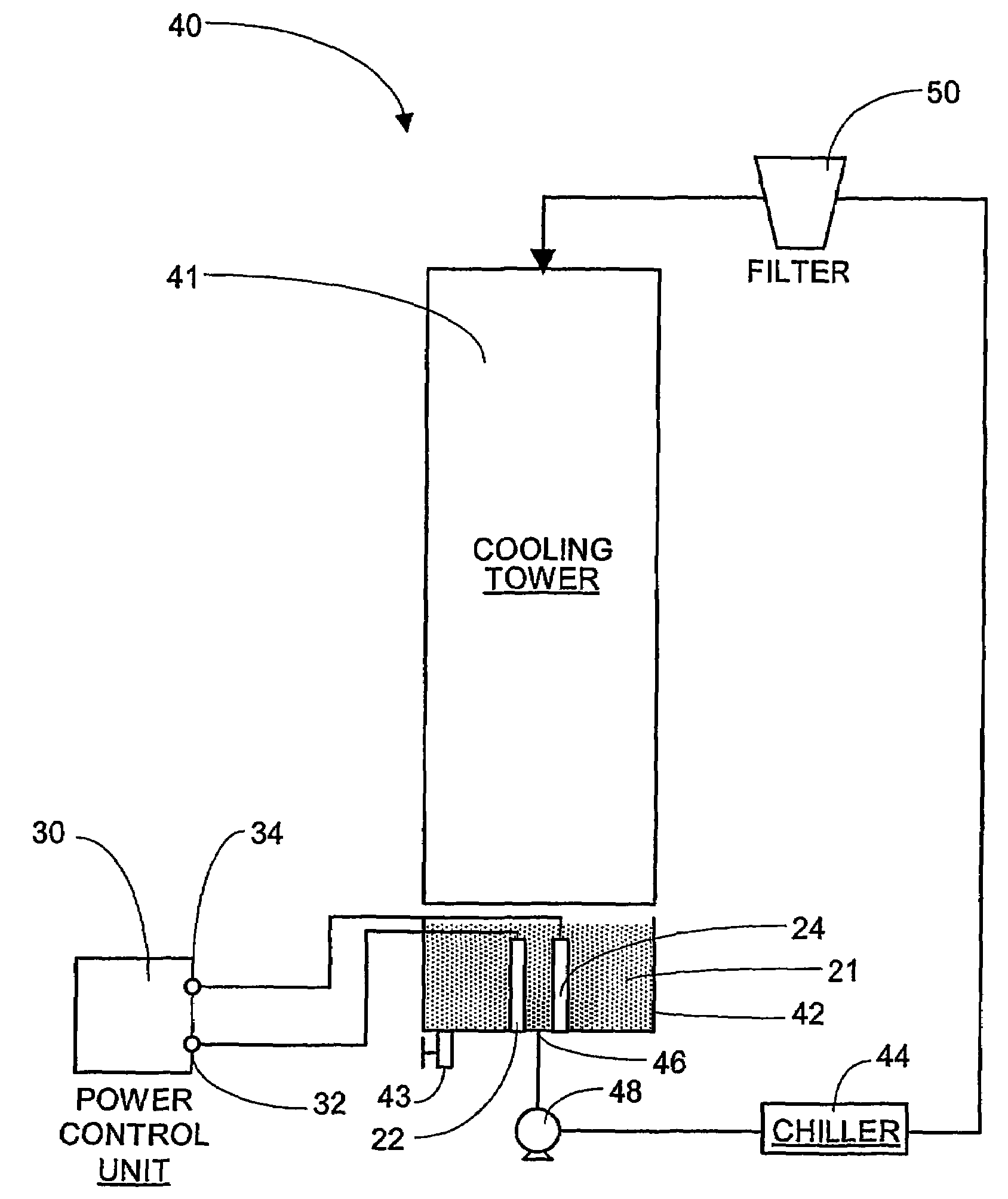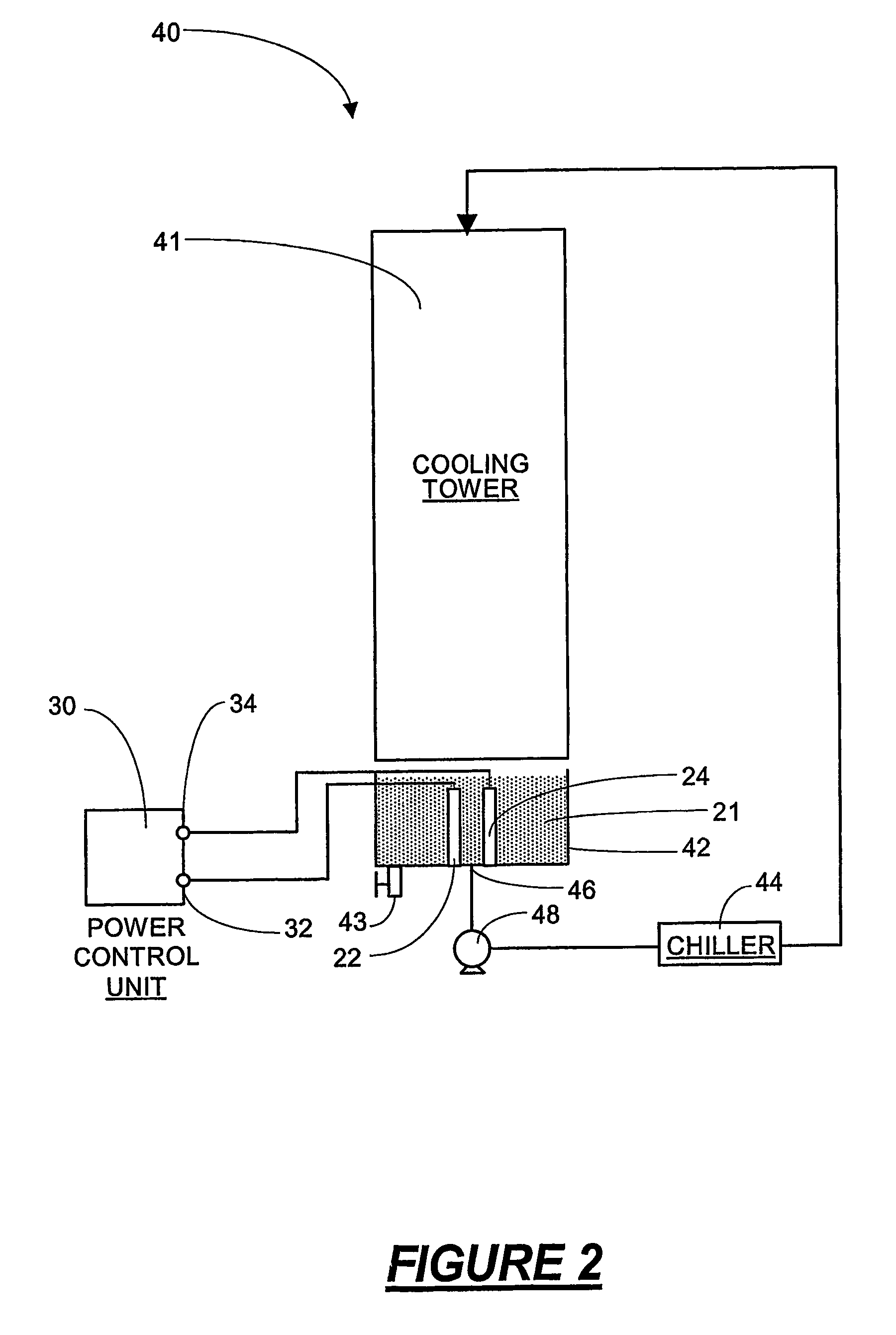Water treatment process
- Summary
- Abstract
- Description
- Claims
- Application Information
AI Technical Summary
Benefits of technology
Problems solved by technology
Method used
Image
Examples
Embodiment Construction
[0024]Referring now to the drawings, and to FIG. 1 in particular, an apparatus for inducing an electric field is shown and designated generally as 20. The apparatus 20 has a first electrode 22 and a second electrode 24. The first electrode 22 is connected by a wire to first terminal 32 on a power source 30, and the second electrode 24 is connected by a wire to a second terminal 34 on the power source. The electrodes 22,24 are spaced apart, and a voltage difference is applied across the electrodes to create an electric field. In FIG. 1, the electric field is represented by the double-ended arrows labeled E. The electrodes are placed in direct contact with a coolant stream 21 flowing through a cooling system. In FIG. 1, water is used as the coolant 21. The electrodes are positioned to apply the electric field directly across the liquid stream. The apparatus 20 is operable to promote bulk precipitation of mineral ions present in the liquid and reduce the potential for scaling in coolin...
PUM
| Property | Measurement | Unit |
|---|---|---|
| Dielectric strength | aaaaa | aaaaa |
| Frequency | aaaaa | aaaaa |
| Temperature | aaaaa | aaaaa |
Abstract
Description
Claims
Application Information
 Login to View More
Login to View More - R&D
- Intellectual Property
- Life Sciences
- Materials
- Tech Scout
- Unparalleled Data Quality
- Higher Quality Content
- 60% Fewer Hallucinations
Browse by: Latest US Patents, China's latest patents, Technical Efficacy Thesaurus, Application Domain, Technology Topic, Popular Technical Reports.
© 2025 PatSnap. All rights reserved.Legal|Privacy policy|Modern Slavery Act Transparency Statement|Sitemap|About US| Contact US: help@patsnap.com



